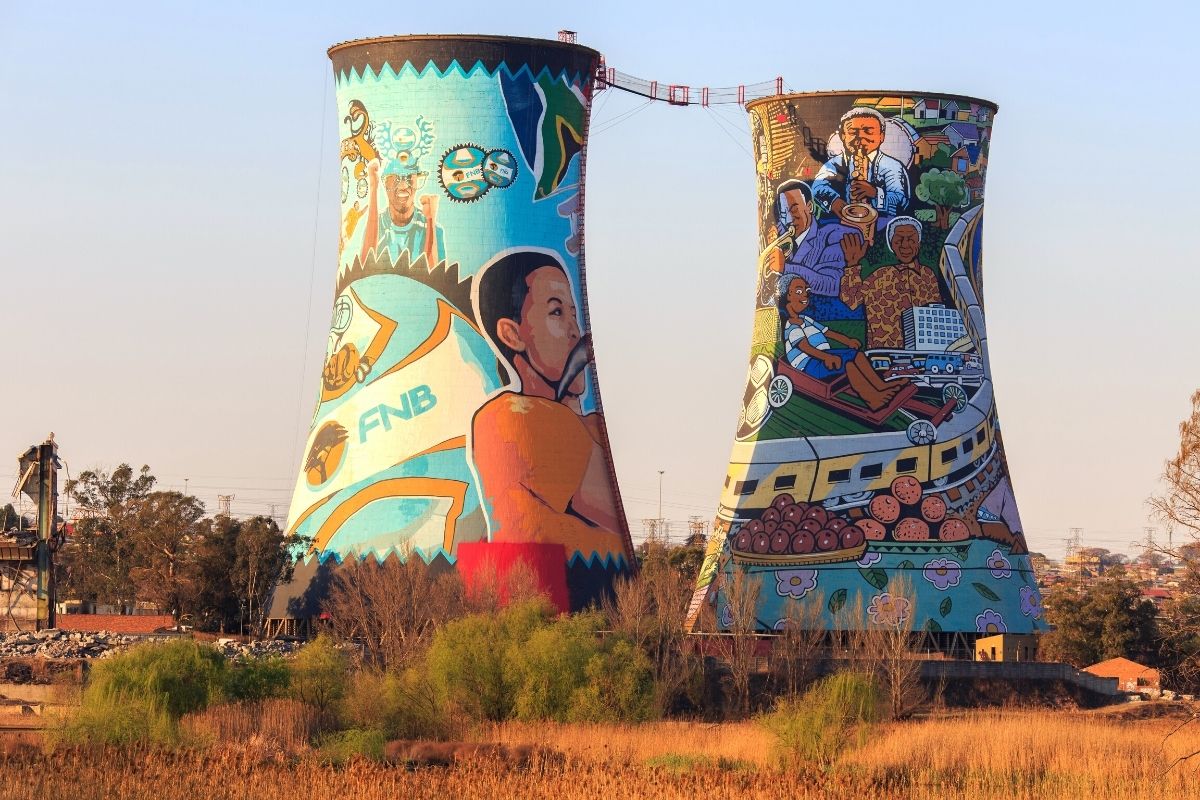The 5-Minute Rule for Johannesburg North Attractions
Table of ContentsThe Definitive Guide to Johannesburg North AttractionsThe Only Guide to Johannesburg North AttractionsThe Basic Principles Of Johannesburg North Attractions 10 Easy Facts About Johannesburg North Attractions DescribedThe Facts About Johannesburg North Attractions RevealedFacts About Johannesburg North Attractions RevealedIndicators on Johannesburg North Attractions You Need To Know
You need to maintain protection in mind and tourists have to stay alert at all times when in unknown environments. Talk to the residents when you remain in town to discover the location you are remaining in. Johannesburg North attractions. When on the street (this doesn't use to shopping center and various other safe and secure atmospheres) ideal general recommendations is to attempt your best to resemble a local and to avoid showing any kind of form of riches
The smart Trick of Johannesburg North Attractions That Nobody is Discussing
Teacher Revil Mason O. J. (Thomson, 1946) explored the Witwatersrand's pre-colonial background. His historical job blew up the 'em pty land' misconception, according to which the region was lacking human habitation before the arrival of European settlers. In his publications Prehistory of the Transvaal: A Document of Human Task (1962) and Beginnings of Black People of Johannesburg and the Southern Western Central Transvaal Advertisement 3501880 (1986 ), Teacher Mason showed the extent of social and financial advancement in the location prior to Europeans established foot here.

Top Guidelines Of Johannesburg North Attractions
He showed the government's consent, approved after he had promised to maintain his discoveries trick. In 1874, small mining procedures were started in the Magaliesberg, where an Australian, Henry Lewis, had found gold down payments. In 1878, David Wardrop located gold in quartz blood vessels at Zwartkop, north of Krugersdorp. In 1881, Stephanus Minnaar stumbled upon gold on the ranch Kromdraai, near the Cradle of Mankind.
In March 1886, a protrusion (quickly to be called the Main Reef) was discovered, fairly fortuitously, on Gerhardus Oosthuizen's ranch Langlaagte. Some claim that the Lancastrian coal miner George Pedestrian discovered this reef. One more itinerant English prospector, George Harrison (who had formerly operated in Australian mines) obtained a prospecting licence in regard of Langlaagte in Might 1886.
He determined to carry on in a quest for greener pastures, and disposed of his Langlaagte claim for the princely sum of 10. Alas: below lay the richest goldfield ever found. The discovery of this rich auriferous coral reef prompted a gold thrill that signified completion of agrarian serenity in the southerly Transvaal.
It would, within six years, become the largest town in southerly Africa. Within a years, it would certainly make the Z. A. R. till after that an anarchical and insolvent little state the richest nation in Africa. By the turn of the century, the Z. A. R. was to exceed Russia, Australia and the United States of America to become the world's leading gold producer, creating greater than a quarter of the world's gold.
Our Johannesburg North Attractions Statements
It was called Ferreira's Camp, called after Colonel Ignatius Ferreira. He was a Boer traveler upon whom the British authorities had actually bestowed the condition of Companion of the A Lot Of Identified Order of St Michael and St George (qualifying him to the post-nominal letters C. M. G.) in appreciation for his role in the war that had deposed the Pedi king Sekhukhune in 1879.
Quickly the More Help camp was including tents and wagons as beginners got here daily from everywhere. By September 1886, some 400 individuals stayed in Ferreira's Camp, which quickly boasted built iron and wood structures. 2 other camps were established: Meyer's Camp on the farm Doornfontein, and Paarl Camp. The latter was nicknamed Afrikander Camp; lots of people from the Cape Swarm worked out there.

Not known Details About Johannesburg North Attractions
This name gained money by word of mouth, such that the State Secretary affirmed the hop over to these guys name to the Mining Commissioner on 9 October 1886. Stands in the town were auctioned on 8 December 1886. While some stands were cost 10, others were torn down for as low as sixpence.
Two years later, these erven were to transform hands for as high as 750 each. The tented camps dwindled as a dorp of corrugated iron structures established and increased north of the mines located along the Key Reef Road. Areas such as Jeppe's Town (where working-class immigrants erected their residences) and Doornfontein (where the affluent brand-new 'Randlords' started to create their extravagant houses) were soon included in the ever-expanding map of the town.
7 Easy Facts About Johannesburg North Attractions Explained
Apart from the street names, there were no indicators of Johannesburg being located in a Dutch-speaking nation. Many years later, C. W. Kearns O. J. (one of the initial children enlisted at St John's College in 1898) would certainly remember: 'A strange fact about Johannesburg was that, although it remained in the [Boer Republic], nearly every person talked English and even the Federal government servants resolved one in English, unless they were go to website first attended to in the Taal (or Low Dutch)'.
Thus, Britain had a passion in guaranteeing optimum conditions for gold production on the Witwatersrand, which the gold was exported to London instead of Berlin a crucial rendered even more clamant by the Z. A. R - Johannesburg North attractions.'s enhancing toenadering with Germany. Mine owners got on a clash with President Kruger, whose plan of monopolistic concessions (commonly approved to his cronies) avoided mining companies from acquiring supplies of products (specifically dynamite) and work by themselves, less expensive terms
The Single Strategy To Use For Johannesburg North Attractions
In 1890, the Volksraad had limited the franchise to white guys that had actually lived in the Z. A. R. for fourteen years or longer, thus invalidating the majority of the immigrants (who happened to be the major factors to the fiscus). Anxiety for the ballot was a plain pretense for promoting a various agenda; a lot of uitlanders regarded themselves as short-term visitors and had no objective of remaining in the Z.